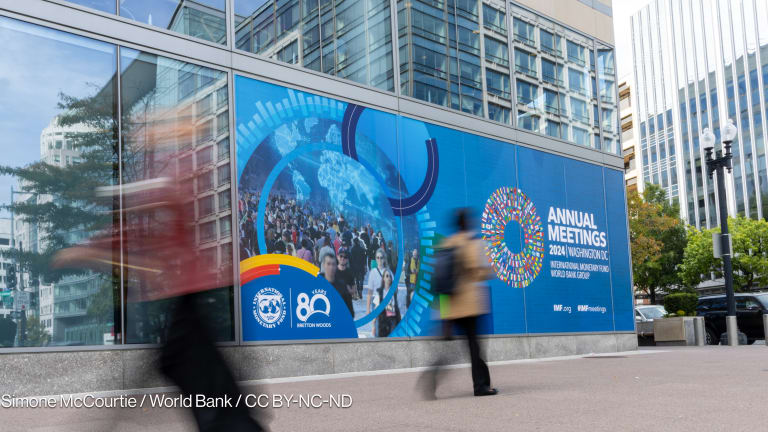
WASHINGTON — The World Bank is expanding its work in fragile states and on Wednesday, CEO Kristalina Georgieva outlined four factors guiding the institution’s work in the most challenging environments.
The World Bank has doubled financial resources to fragile states — it is now about $14 billion — and moved staff into those countries, with nearly 1,000 people now employed in fragile areas, Georgieva said at the annual Interaction Forum in Washington D.C. The World Bank is in the consultation process for its strategy for fragility, conflict and violence. In fiscal year 2019, the World Bank identified 36 countries and territories as fragile.
“We are directing more resources towards fragile states because fragility is more prominent, as the data show,” Georgieva said. “We recognize that we will not succeed in the fight against extreme poverty unless we zero [in] on where the numbers are going in the wrong direction, they're going up rather than down, and these are countries affected by conflict, natural disasters or countries with very high population growth that exceeds economic growth … and very often countries with bad governance.”
She laid out four ways that the Bank’s approach to fragile states is changing and what it has learned about what is essential for addressing fragility.
World Bank looking for new options in fragile and conflict states
The World Bank is in the early stages of a new strategy on fragility, conflict, and violence, which could offer a model for bringing development investment earlier to protracted crises.
There must be a “much stronger focus on prevention” and an ability to act early if there are warning signs of conflict or natural disasters. She pointed to the fact that about 18 months ago four countries — Yemen, South Sudan, northern Nigeria, and Somalia — were threatened by famine, but the World Bank and partners mobilized nearly $2 billion to respond and the famine did not happen.
“When we now look at threats, natural disasters, we significantly increase our forecast capabilities and then we work with countries to be more resilient so when a disaster hits fewer people die and there is less damage,” she said.
Research the bank did along with the U.N. found that even in conflict situations communities can be helped early to reduce risks and the bank can help people withstand the horror of war by directing more attention and resources, Georgieva said.
Another change is about presence, the World Bank, and the development community, need to be in countries that are currently in conflict. With the help of other development partners it can help create better conditions for people to survive and also help build opportunities to regain peace and stability, she said.
The World Bank has also learned that it must stay in these countries for the long term to make a difference, Georgieva said.
The last lesson or takeaway for the bank is that its best ally is the people who live in these countries who Georgieva described as “the first responders and best peacekeepers.”
“But if institutions and governments let them down, it is not an excuse for us to let them down,” she said.
One of the key challenges in tackling fragility is that it is difficult to sell prevention, despite the fact that it can save money and lives. The development community needs to find better ways to talk about and frame prevention, she said.
A test of how the World Bank can do that is underway with the International Development Association replenishment that is underway. The bank is looking to at least match the last replenishment of $75 billion for the world’s most vulnerable countries, including its work on fragile states.








